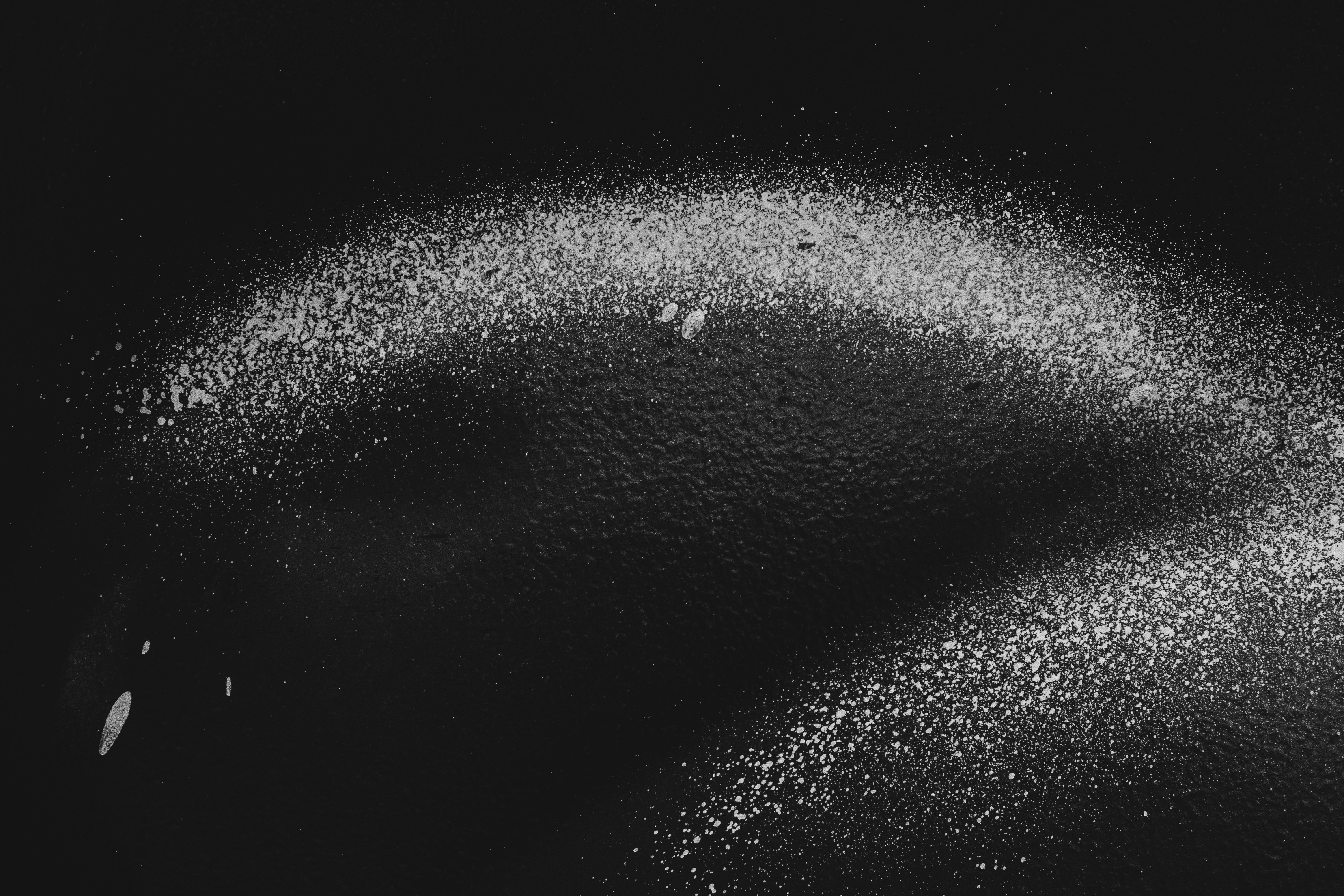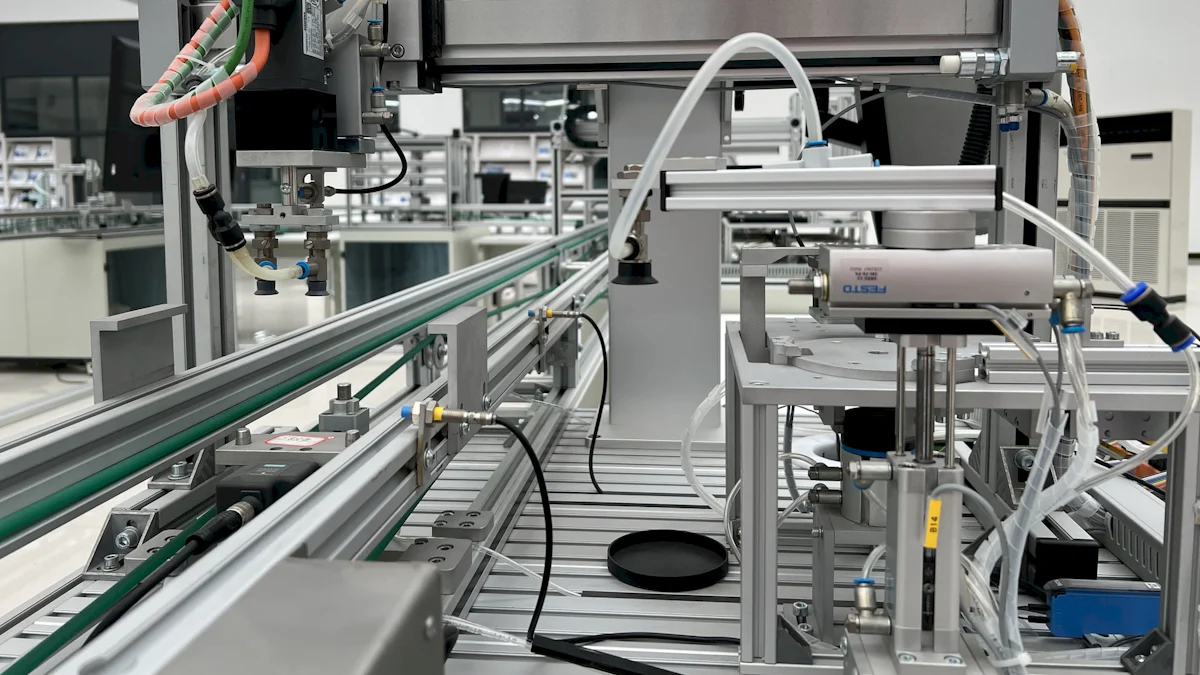Exploring the Types of Powder Coating Methods and Their Uses

Powder coating stands out as a durable and eco-friendly finishing technique that has transformed surface protection. It uses fine powder particles to create a tough, uniform layer that resists wear, corrosion, and fading. Unlike traditional liquid paints, this method eliminates harmful solvents and volatile organic compounds (VOCs), ensuring a cleaner and safer environment. Its efficiency minimizes material waste, making it a cost-effective choice. Whether you seek to protect surfaces or enhance their aesthetic appeal, powder coating methods offer a sustainable solution that meets both functional and environmental needs.
Overview of Powder Coating Methods
Powder coating systems offer a variety of methods to achieve durable and visually appealing finishes. Each method caters to specific needs, ensuring versatility across industries. Below, you will explore some of the most effective powder coating methods and their unique applications.
Electrostatic Spray Deposition (ESD)
How it works
Electrostatic spray deposition (ESD) is one of the most widely used industrial powder coating methods. In this process, a spray gun charges powder particles with high voltage, creating an electrostatic field. These charged particles are then sprayed onto a grounded workpiece, where they adhere evenly. The coated object is then cured in an oven, allowing the powder to melt and form a smooth, durable layer.
Common applications
You will find ESD commonly used in automotive, appliance, and furniture industries. It is ideal for coating metal surfaces, such as car parts, home appliances, and office furniture. Its ability to create uniform layers makes it a preferred choice for intricate designs and complex shapes.
Benefits of ESD
Provides consistent and even powder coating finishes.
Reduces material waste due to efficient application.
Ensures excellent adhesion and durability, even on complex surfaces.
Fluidized Bed Application
How it works
The fluidized bed application involves immersing a preheated workpiece into a bed of powder that is aerated to create a fluid-like state. The heat from the workpiece causes the powder to melt and adhere to its surface, forming a thick and durable coating. This method does not require a spray gun, making it suitable for specific applications.
Common applications
This method is often used for coating items like dishwasher racks, tool handles, and outdoor furniture. It is particularly effective for objects requiring thicker coatings or those with simple shapes.
Benefits of fluidized bed application
Produces thicker and more durable coatings.
Eliminates the need for complex spraying equipment.
Ideal for coating large batches of small parts efficiently.
Tribo Charging
How it works
Tribo charging is a less common but highly effective method of industrial powder coating. It uses a specialized spray gun to charge powder particles through friction as they pass through the gun. These charged particles are then attracted to the grounded workpiece, creating a uniform coating. Unlike ESD, this method does not rely on high-voltage electricity.
Common applications
Tribo charging is often used in applications where ESD may not be as effective. It works well for coating non-metallic surfaces or objects with challenging geometries. You might encounter this method in industries requiring precision and control.
Benefits of tribo charging
Offers better control over coating thickness.
Reduces overspray, minimizing material waste.
Works effectively on non-metallic and complex surfaces.
Plasma Spray
How it works
Plasma spray is a specialized method within industrial powder coating that uses a high-temperature plasma jet to apply coatings. The process involves heating powder particles to a molten or semi-molten state and propelling them onto a surface at high velocity. This creates a strong bond between the coating and the substrate. Plasma spray operates at lower temperatures compared to other methods, making it suitable for heat-sensitive materials like plastics and composites. The high energy of the plasma jet ensures a uniform and smooth layer, enhancing the quality of the coating.
Common applications
You will often see plasma spray used in industries requiring precision and durability. It is ideal for coating medical devices, aerospace components, and electronic parts. This method works well on materials that cannot withstand high heat, such as certain plastics and composites. Plasma spray also finds applications in creating protective layers for machinery parts exposed to extreme wear and tear.
Benefits of plasma spray
Enables coating of heat-sensitive substrates without deformation.
Produces durable and high-quality powder coating finishes.
Enhances adhesion and surface properties for better performance.
Offers versatility for a wide range of materials and industries.
Thermal Spray
How it works
Thermal spray is another versatile technique in industrial powder coating systems. This method involves melting powder particles using a heat source, such as a flame or electric arc, and spraying them onto a surface. The molten particles solidify upon contact, forming a protective and functional coating. Thermal spray can be applied to metals, ceramics, and even plastics, making it one of the most adaptable powder coating methods.
Common applications
Thermal spray is widely used in industries like automotive, aerospace, and manufacturing. You will find it applied to engine components, turbine blades, and industrial machinery. It is particularly effective for enhancing wear resistance and corrosion protection. This method is also suitable for repairing worn-out parts, extending their lifespan.
Benefits of thermal spray
Provides excellent resistance to wear, corrosion, and high temperatures.
Works on a variety of materials, including metals and ceramics.
Offers cost-effective solutions for repairing and maintaining equipment.
Delivers consistent and reliable powder coating finishes.
UV-Cured Powder Coating
How it works
UV-cured powder coating is an innovative method that uses ultraviolet light to cure the coating. After applying the powder to the substrate, UV light activates the curing process, solidifying the coating in seconds. This method requires less heat energy, making it ideal for heat-sensitive materials like plastics and composites. The process is efficient and environmentally friendly, as it eliminates the need for solvents and reduces energy consumption.
Common applications
You will find UV-cured powder coating used in industries that prioritize speed and precision. It is commonly applied to electronic components, furniture, and decorative items. This method is particularly beneficial for coating materials that cannot endure high temperatures, ensuring a flawless finish without compromising the substrate.
Benefits of UV-cured powder coating
Reduces energy consumption and speeds up production cycles.
Ensures high adhesion and durability on heat-sensitive substrates.
Offers eco-friendly solutions with no solvents or VOC emissions.
Requires minimal space, making it suitable for compact powder coating systems.
Comparing Thermoset and Thermoplastic Powders

Powder coatings come in two main types: thermoset and thermoplastic. Each type offers unique properties and advantages, making them suitable for different applications. Understanding their characteristics helps you choose the right option for your needs.
Thermoset Powders
Properties and characteristics
Thermoset powders undergo a chemical transformation during the curing process. When exposed to heat, they form a permanent molecular structure that cannot be remelted. This chemical reaction enhances their durability and resistance to high temperatures. Thermoset coatings also provide excellent protection against wear, corrosion, and chemicals. They are available in a wide range of finishes, including matte, gloss, and textured options.
Key Insight: Thermoset powders are ideal for applications requiring long-lasting performance and heat resistance.
Common applications
You will often find thermoset powders used in industries like automotive, appliances, and construction. They are perfect for coating car parts, outdoor furniture, and industrial machinery. Their ability to withstand extreme conditions makes them a reliable choice for high-heat environments, such as engine components and exhaust systems.
Thermoplastic Powders
Properties and characteristics
Thermoplastic powders differ from thermosets because they do not undergo a chemical change during curing. Instead, they melt and flow into a smooth layer when heated. This property allows them to be reshaped or repaired after application. Thermoplastic coatings are known for their flexibility, impact resistance, and chip resistance. However, they generally offer less heat resistance compared to thermoset powders.
Did You Know? Thermoplastic coatings can be remelted and reused, making them a more sustainable option.
Common applications
Thermoplastic powders are commonly used in industries that prioritize aesthetics and design flexibility. You will see them applied to consumer goods, decorative items, and protective coatings for pipelines. Their thick and durable layers make them suitable for coating playground equipment, tool handles, and storage containers.
Key Differences Between Thermoset and Thermoplastic Powders
Durability and performance
Thermoset powders excel in durability and heat resistance. They form a strong, permanent bond that withstands harsh conditions. Thermoplastic powders, on the other hand, offer superior flexibility and impact resistance. They are better suited for applications requiring repairability and adaptability.
Cost considerations
Thermoset powders are generally more cost-effective than thermoplastics. Their lower price point makes them a popular choice for large-scale industrial applications. Thermoplastic powders, while more expensive, provide added value through their reusability and ease of repair.
Environmental impact
Thermoplastic powders offer a more sustainable solution due to their ability to be remelted and reused. Thermoset powders, while durable, cannot be recycled in the same way. However, both types contribute to eco-friendly practices by eliminating the need for harmful solvents and reducing waste.
Quick Tip: If sustainability is a priority, thermoplastic powders may align better with your goals.
By understanding the properties, applications, and differences between thermoset and thermoplastic powders, you can make informed decisions for your coating projects. Each type has its strengths, ensuring you find the perfect match for your specific requirements.
Advantages of Powder Coating
Powder coating offers a range of benefits that make it a preferred choice across industries. Its ability to deliver high-quality finishes, combined with its eco-friendly and cost-effective nature, ensures it stands out as a superior finishing solution. Below, you will explore the key advantages of powder coating systems and how they contribute to durability, environmental sustainability, and economic efficiency.
Durability and Longevity
Resistance to wear and tear
Powder coating systems provide exceptional resistance to wear and tear. The coatings form a tough, uniform layer that protects surfaces from scratches, chips, and abrasions. This durability makes powder coating finishes ideal for high-traffic areas and industrial environments where surfaces face constant use. Unlike traditional liquid coatings, powder coatings maintain their integrity over time, ensuring long-lasting protection.
Fact: Powder coatings offer enhanced durability compared to liquid coatings, making them a reliable choice for demanding applications.
Protection against corrosion
Powder coating methods excel in protecting surfaces from corrosion. The thick, even layer created during the process acts as a barrier against moisture, chemicals, and environmental elements. This protection is particularly valuable for outdoor applications, such as metal furniture, automotive parts, and construction materials. By preventing rust and degradation, powder coatings extend the lifespan of coated objects.
Quick Tip: For outdoor projects, consider industrial powder coating systems to ensure maximum corrosion resistance.
Environmental Benefits
Low VOC emissions
Powder coating systems stand out as an environmentally friendly option due to their low VOC (volatile organic compound) emissions. Unlike liquid coatings, which often contain harmful solvents, powder coatings eliminate the need for these chemicals. This reduction in VOCs contributes to cleaner air and a healthier environment, aligning with modern sustainability goals.
Did You Know? Powder coatings produce significantly lower carbon dioxide emissions compared to traditional liquid coatings, making them a greener choice.
Recyclability of powder
Powder coating processes generate minimal waste, as unused powder can be collected and reused. This recyclability not only reduces material waste but also enhances the overall efficiency of the process. By choosing powder coating systems, you actively support sustainable practices while achieving high-quality finishes.
Key Insight: The recyclability of powder coatings makes them one of the most eco-friendly finishing options available today.
Cost-Effectiveness
Reduced material waste
Powder coating methods minimize material waste through efficient application techniques. Unlike liquid coatings, which often result in overspray and wastage, powder coatings adhere precisely to surfaces. This efficiency reduces the amount of material required, lowering costs and improving resource utilization.
Fact: Powder coating processes are more cost-effective than traditional liquid methods due to reduced waste and faster production cycles.
Long-term savings
While the initial investment in powder coating systems may vary, the long-term savings are undeniable. The durability of powder coatings reduces the need for frequent re-coating, touch-ups, or replacements. This longevity translates into significant cost savings over time, making powder coating a smart choice for both small-scale and large-scale projects.
Quick Tip: Opt for powder coating finishes when seeking cost-effective finish options that deliver lasting value.
By understanding the advantages of powder coating, you can make informed decisions for your projects. Whether you prioritize durability, environmental impact, or cost efficiency, powder coating systems provide a versatile and reliable solution for a wide range of applications.
Aesthetic Versatility
Wide range of colors and finishes
Powder coating offers you an incredible variety of colors and finishes, making it a top choice for achieving creative and customized designs. Whether you prefer a glossy, matte, textured, or metallic look, powder coating delivers vibrant and consistent results. This versatility allows you to match your specific aesthetic preferences while ensuring the coating remains visually appealing over time.
For decorative applications, such as furniture or architectural products, powder coating provides the flexibility to create unique effects. You can achieve metallic sheens for a modern touch or textured finishes for a more sophisticated appearance. The ability to combine durability with aesthetic appeal makes powder coating ideal for both functional and decorative purposes.
Fun Fact: Powder coatings are often used in the furniture industry to create vibrant colors and intricate textures that stand out while maintaining their resilience.
Consistent and even coating
One of the most significant advantages of powder coating is its ability to produce consistent and even finishes. Unlike traditional liquid paints, powder coating adheres uniformly to surfaces, even on complex shapes or intricate designs. This ensures that every corner and edge receives the same level of coverage, resulting in a flawless appearance.
The process, whether through electrostatic spray deposition or fluidized bed application, guarantees smooth and durable architectural finishes. This consistency not only enhances the visual appeal but also contributes to the coating's longevity. You can rely on powder coating finishes to maintain their integrity, even under challenging conditions.
Quick Tip: For projects requiring the longest lasting and most durable architectural finish, powder coating is an excellent choice due to its superior coverage and resilience.
By choosing powder coating, you gain access to a wide range of finishes that combine beauty with durability. Its ability to deliver vibrant colors, unique textures, and consistent coverage ensures that your projects stand out while remaining protected for years to come.
How to Choose the Right Powder Coating Method
Selecting the ideal method for powder coating requires careful consideration of various factors. Each project has unique requirements, and understanding these will help you achieve the best results. Below, you will find a guide to help you make informed decisions.
Factors to Consider
Type of material being coated
The type of material plays a critical role in determining the most suitable powder coating method. Different surfaces require specific types of coatings to ensure proper adhesion and durability. For instance, heat-sensitive materials like plastics benefit from methods such as UV-cured powder coating or plasma spray, which operate at lower temperatures. Metals, on the other hand, can withstand higher heat and are compatible with methods like electrostatic spray deposition (ESD) or thermal spray. Choosing a method that aligns with the material ensures a strong bond and long-lasting protection.
Quick Tip: Always verify the compatibility of the coating method with the substrate to avoid adhesion issues or surface damage.
Desired finish and durability
Your desired finish and the level of durability required should guide your choice. If you need a smooth and consistent appearance, methods like ESD or fluidized bed application deliver uniform coatings. For projects demanding high resistance to wear, abrasion, or corrosion, thermal spray or thermoset powders provide excellent durability. The durability of the coating directly impacts the lifespan of your product, so prioritize methods that meet your performance expectations.
Fact: Durable coatings not only protect surfaces but also reduce maintenance costs over time.
Budget and cost constraints
Budget constraints often influence the choice of powder coating methods. Automated powder coating systems, while efficient, may involve higher initial costs but offer long-term savings through reduced material waste and faster production cycles. For smaller projects, manual methods like fluidized bed application can be more economical. Balancing cost with quality ensures you achieve the desired results without overspending.
Did You Know? Investing in the right finishing method upfront can save you money by minimizing rework and extending product life.
Matching Methods to Applications
Industrial and automotive uses
Industrial and automotive applications demand robust coatings that can withstand harsh conditions. Methods like thermal spray and ESD are ideal for these uses. Thermal spray enhances wear and corrosion resistance, making it suitable for engine components and machinery. ESD, on the other hand, provides precise and consistent coatings for automotive parts, ensuring both functionality and aesthetic appeal.
Key Insight: For industrial and automotive projects, prioritize methods that deliver durable and colour-durable quality finishes.
Consumer goods and decorative applications
For consumer goods and decorative items, aesthetics often take precedence. Methods like UV-cured powder coating and tribo charging excel in creating vibrant and intricate designs. UV-cured coatings offer quick curing times and are perfect for heat-sensitive materials, while tribo charging ensures even coverage on complex shapes. These methods allow you to achieve architectural finishes that combine beauty with durability.
Fun Fact: Powder coating is widely used in the furniture industry to create visually appealing and resilient designs.
Specialized coatings for unique needs
Certain projects require specialized coatings to meet unique demands. Plasma spray is an excellent choice for applications involving heat-sensitive substrates or precision components, such as medical devices and aerospace parts. For thicker coatings or large batches of small parts, fluidized bed application provides an efficient solution. Matching the method to the specific requirements of your project ensures optimal performance and longevity.
Quick Tip: Evaluate the environmental and functional needs of your project to select the most suitable dry finishing process.
By considering these factors and matching the method to your application, you can confidently choose the ideal method for your powder coating needs. Whether you prioritize durability, aesthetics, or cost-efficiency, the right choice will enhance the quality and performance of your project.
Powder coating methods provide you with a versatile solution for achieving both a protective and decorative coating. Each method offers unique benefits, from durability to environmental sustainability. By understanding the different powder coating systems, you can select the one that aligns with your material, budget, and performance needs. This choice ensures a durable layer of protection while enhancing the aesthetic appeal of your projects. Powder coating stands out as a cost-effective, eco-friendly, and reliable finishing option for a wide range of applications.
FAQ
What is powder coating?
Powder coating is a finishing process that uses fine powder particles to create a durable and protective layer on surfaces. Unlike traditional liquid paints, it does not require solvents. The powder adheres to the surface through electrostatic charges and cures under heat to form a smooth, tough coating. This method enhances both the appearance and longevity of the coated object.
Is powder coating environmentally friendly?
Yes, powder coating is an eco-friendly finishing option. It eliminates the need for harmful solvents and volatile organic compounds (VOCs), which are common in liquid paints. The process generates minimal waste since unused powder can be collected and reused. By choosing powder coating, you contribute to reducing air pollution and promoting sustainable practices.
How long does powder coating last?
Powder coating provides long-lasting protection. Its durability depends on factors like the type of powder used, the application method, and the environment where the coated object is placed. On average, powder-coated surfaces can last 15 to 20 years or more. Regular maintenance, such as cleaning, helps extend its lifespan.
Can powder coating be applied to all materials?
Powder coating works best on conductive materials like metals. However, advancements in technology allow it to be applied to some non-metallic surfaces, such as plastics and composites, using specialized methods like plasma spray or UV-cured powder coating. Always check the compatibility of the material before starting the process.
What are the main advantages of powder coating?
Powder coating offers several benefits:
Durability: It resists wear, corrosion, and fading.
Eco-friendliness: It produces low VOC emissions and reduces waste.
Cost-effectiveness: It minimizes material waste and provides long-term savings.
Aesthetic versatility: It offers a wide range of colors and finishes with consistent results.
Is powder coating suitable for outdoor applications?
Yes, powder coating is ideal for outdoor use. It creates a thick, protective layer that shields surfaces from moisture, UV rays, and harsh weather conditions. This makes it a popular choice for outdoor furniture, automotive parts, and construction materials.
Can powder coating be repaired if damaged?
Repairing powder coating is possible but can be challenging. Minor scratches or chips can be fixed using touch-up kits. For larger damages, recoating the entire surface may be necessary. Thermoplastic powders, which can be remelted, offer easier repair options compared to thermoset powders.
How does powder coating compare to liquid painting?
Powder coating outperforms liquid painting in many ways:
Durability: Powder coatings last longer and resist damage better.
Eco-friendliness: They produce no harmful solvents or VOCs.
Efficiency: The process generates less waste and provides even coverage.
Cost: While the initial setup may be higher, the long-term savings make it more economical.
What industries commonly use powder coating?
Powder coating is widely used across various industries:
Automotive: For car parts and wheels.
Appliances: For refrigerators, ovens, and washing machines.
Furniture: For metal and outdoor furniture.
Construction: For architectural components like railings and window frames.
Electronics: For protective coatings on devices and components.
How do I choose the right powder coating method?
To select the best method, consider these factors:
Material type: Ensure compatibility with the substrate.
Desired finish: Choose a method that delivers the appearance you want.
Durability needs: Match the method to the environmental conditions the object will face.
Budget: Balance cost with quality and efficiency.
By evaluating these aspects, you can make an informed decision that meets your project’s requirements.
See Also
Sandblasting Explained: Basics and Applications
Understanding Functional Testing in CNC and Die Casting
Leading Aluminum Label Trends in the US, EU, and China
Understanding MOQ and Its Effect on RFQ Processes
About Hunan Puka
Established in 2016 and based in Hunan, China, with a liaison point in Berlin, we are a Tier 2 supplier for the automobile industry. We specialize in the production of customized aluminum die-casting parts designed for machines with a closing force ranging from 280 to 800 tons, with subsequent manufacturing process CNC machining and surface treatment. Our commitment to quality is reflected in our accredited quality management system, certified by ISO9001:2015 and IATF16949:2016 standards.


